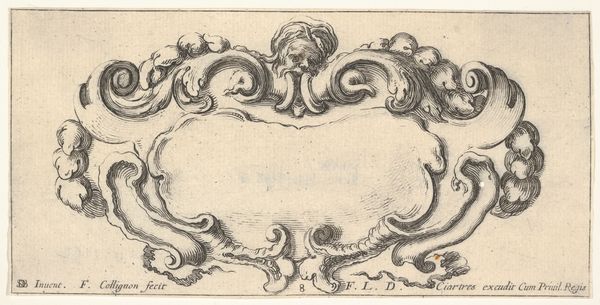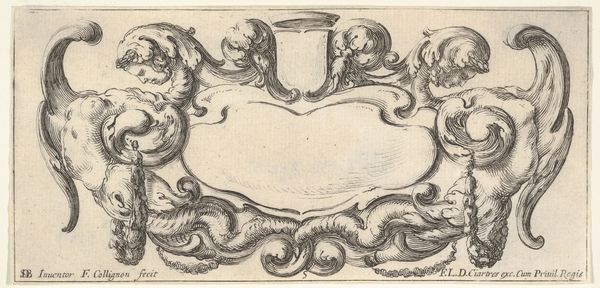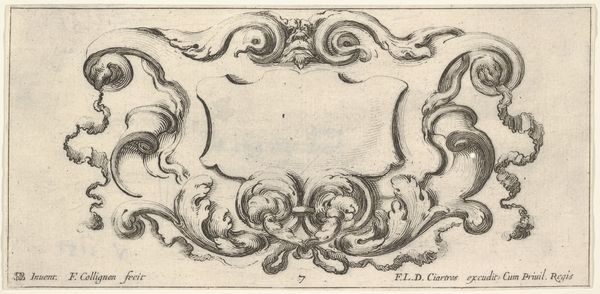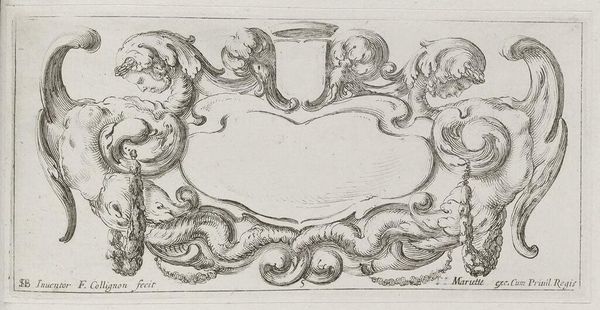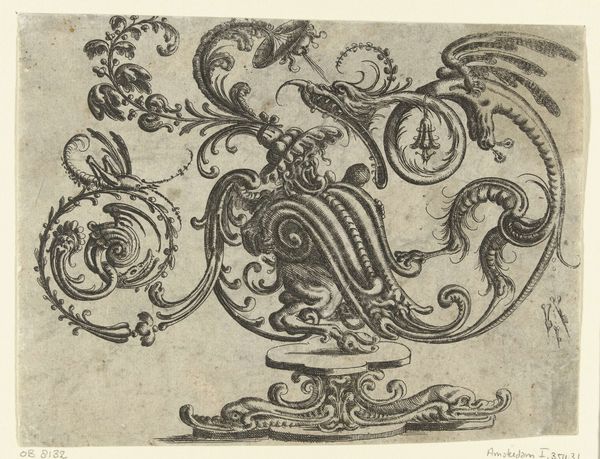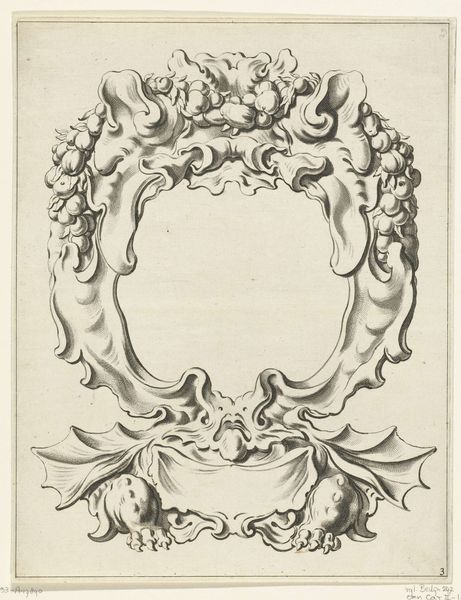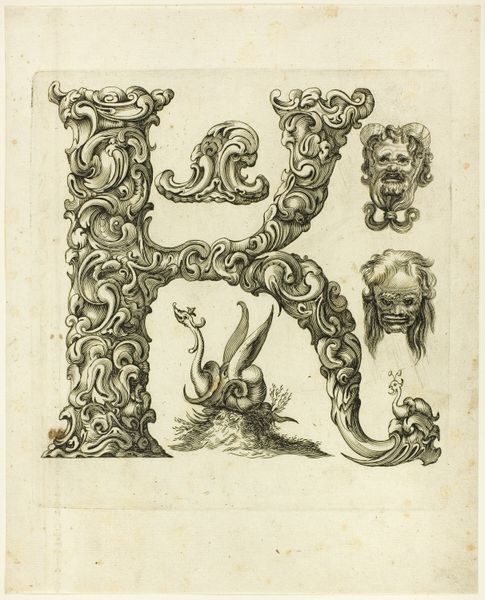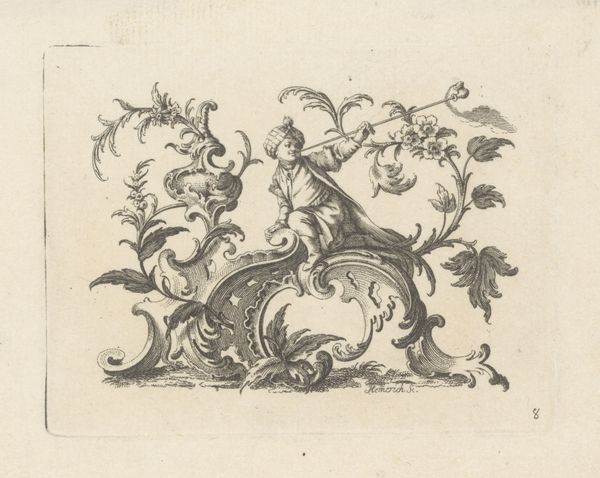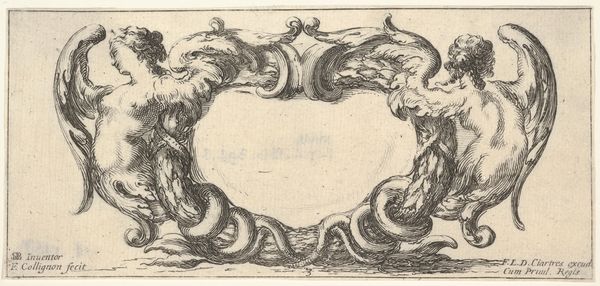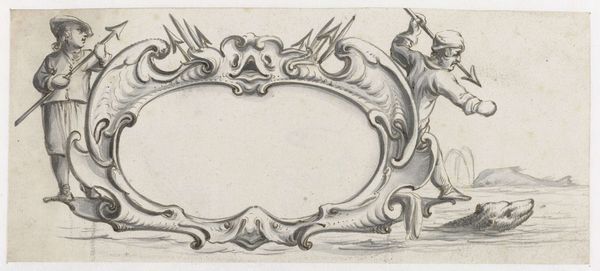
Plate 1: a cartouche with a lion head with wings at top center, a putto holding a blank escutcheon to either side, from 'Twelve cartouches' (Recueil de douze cartouches) 1640 - 1645
0:00
0:00
drawing, print, engraving
#
drawing
#
baroque
#
pen drawing
# print
#
form
#
line
#
engraving
Dimensions: Sheet (Trimmed): 3 3/8 × 6 7/8 in. (8.5 × 17.4 cm)
Copyright: Public Domain
Editor: This is "Plate 1: a cartouche with a lion head with wings at top center, a putto holding a blank escutcheon to either side, from 'Twelve cartouches'" created between 1640 and 1645 by François Collignon. It’s an engraving, and it feels so ornamental, like a frame waiting for something important to be placed inside. How do you interpret this work, thinking about its original context? Curator: It’s fascinating to consider these cartouches as more than just decorative frames. Think about the rise of absolutism in the 17th century. These emblems, with their lions, putti, and empty shields, speak to power and the *potential* for legacy. The blank escutcheon is ripe for inscription; but who gets to write that history, and whose story is omitted by that conscious choice of inclusion? Editor: So, the emptiness isn't just a design element, but also a statement about...representation? Curator: Precisely! This cartouche visualizes the very act of constructing authority and enshrining certain narratives. We need to ask who is commissioning such work, who is able to buy and possess the print. In many ways it highlights the unequal access to representation within baroque society, while simultaneously dictating acceptable forms and narratives. The printing process is critical; this wasn’t meant to be unique but disseminated for standardized cultural consumption. Editor: That makes me see the putti differently. They're not just cute; they're actively *holding* space for a specific kind of power. Curator: Absolutely! And the lion, a symbol of strength and sovereignty. The piece encourages us to interrogate what is included, and conversely excluded when visually declaring status and lineage. Editor: So, by understanding the social context, what seems like just a pretty design actually critiques the very foundations of power? Curator: Indeed. By dissecting the symbols, techniques and purpose, we start unpacking the layers of meaning that reveal deeper cultural commentary about 17th-century society. Hopefully this encourages new dialogue about art and design, especially around gender, class and race. Editor: That gives me a whole new appreciation for what this cartouche represents! Thank you.
Comments
No comments
Be the first to comment and join the conversation on the ultimate creative platform.
